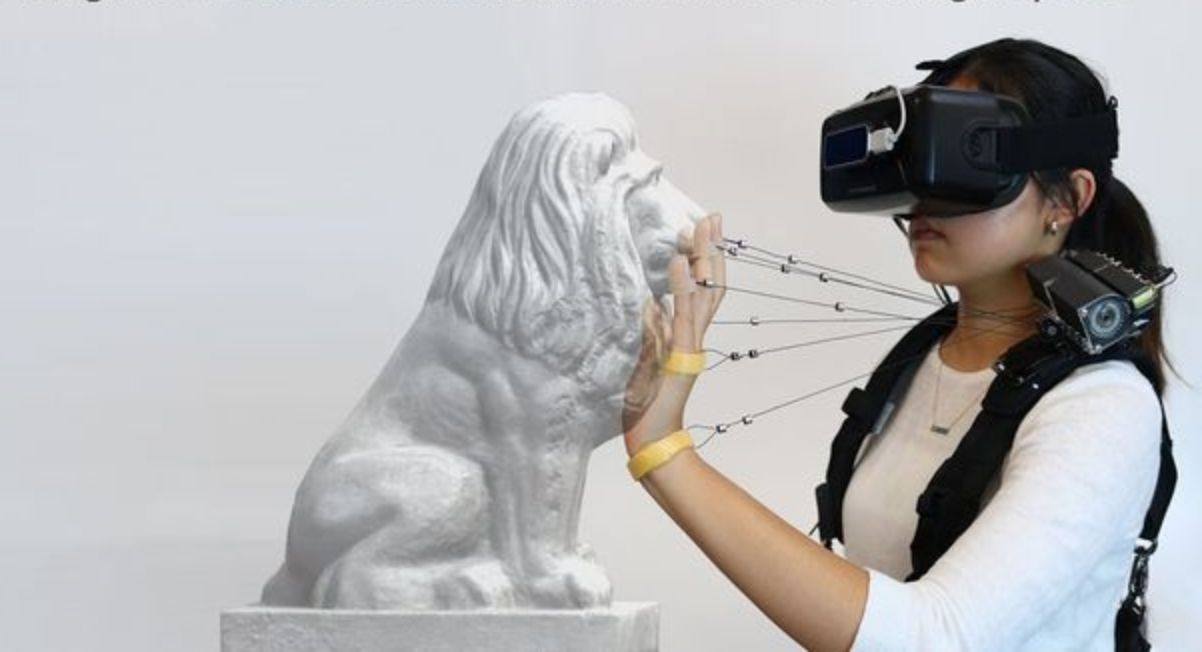Create a free profile to get unlimited access to exclusive videos, sweepstakes, and more!
Researchers invent Matrix-like device to feel 3-D objects in virtual reality

Whether you take the red pill or the blue pill, there's no denying that this Matrix-like device designed by researchers at Carnegie Mellon University has the potential to take your VR gaming experience into another dimension.
Although modern virtual reality headsets and gaming systems like HTC Vive, Oculus Rift, and Playstation VR can often immerse users in a remarkably life-like world, one thing they cannot replicate with any degree of accuracy is the sense of touching, feeling, and grasping solid 3D objects encountered in the simulation like statues, furniture, walls, and appliances.
A new tactile invention called Wireality, developed by a team of budding scientists at Carnegie Mellon, uses a network of retractor strings attached to your hand and fingers to enable users to feel their way around obstacles, barriers, and heavy objects.
The official paper, written by Chris Harrison, assistant professor in CMU's Human-Computer Interaction Institute (HCII), undergraduate student Cathy Fang, Robotics Institute engineer Matthew Dworman, and HCII doctoral student Yang Zhang, describes their innovative methods of design in a report recently published in the Association for Computing Machinery's Digital Library.
By locking up the strings tension when a typical user's hand is in proximity to a virtual wall, Wireality simulates the sense of actually pressing your palm against the digital structure. By the same token, the clever string mechanisms let gamers feel the shapes and contours of a VR statue, reflect weight resistance when pushing a piece of furniture, or allow slapping hands with virtual characters.
One of the team's lead student researchers, Cathy Fang, explains that this shoulder-mounted haptic device utilizes modular, spring-loaded cables to offer lighter weight, eat up less battery power, and keep production costs down to a minimum.
"I think the experience creates surprises, such as when you interact with a railing and can wrap your fingers around it," Fang noted. "It's also fun to explore the feel of irregular objects, such as a statue. The downside to motors is they consume a lot of power. They also are heavy."
Physical feedback in VR world has been toyed with by other research firms with limited success. However, these limiting devices often employ electric motors to manipulate the strings, thereby increasing the cost, weight, and practicality for the average home user. Wireality is the next step in providing energy efficient, rapid-reaction, untethered odysseys into VR's boundless simulated realities.
Now, which pill should I swallow again? Red or blue?


























